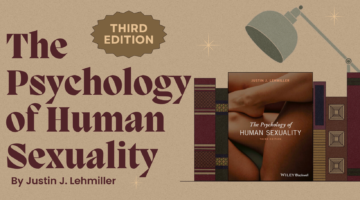Outliving Fertility: Why Menopause Might Be Evolutionarily Advantageous
September 26, 2016 by Justin Lehmiller
On average, women in the United States hit menopause at age 51. At this point, they enter what some scientists call a “post-reproductive lifespan” (or PRLS for short), during which their bodies are no longer physically capable of sexual reproduction. Compared to other species, women are not unique in having a PRLS. In fact, so many primate and non-primate species show evidence of a PRLS that it has been classified as “a general mammalian trait” [1]. However, the thing that is unique about humans is the relative length of the female PRLS.
With respect to both the absolute number of years spent in menopause and the percentage of the lifespan it accounts for, humans are pretty much unparalleled. Indeed, it’s possible for women to spend as much as one-third of their lives (sometimes more) in this post-reproductive stage. Certain types of whales, such as the short-finned pilot whale, have a rather lengthy PRLS, too; however, very few other species even come close to humans in this regard.
So why does menopause account for such a large proportion of women’s lives? This is a question that has puzzled scientists for years. A few theories have been proposed, though, all of which suggest that menopause might have evolutionary roots.
One theory is based on the fact that a woman’s risk of dying as a result of childbirth complications increases as she gets older [2]. Thus, perhaps menopause evolved as a means of protecting women from pregnancy-related health risks. At the same time, menopause would also protect any young, dependent children that a woman might have from losing a major caregiver during critical stages of development. In other words, the basic idea is that, at some age, the increased health and mortality risks associated with pregnancy and childbirth start to outweigh the benefits of the ability to continue reproducing.
An alternative theory is that menopause evolved because grandmothers who are no longer capable of reproduction will begin directing their caregiving efforts to their grandchildren, thereby helping to ensure their survival [2]. Because human babies are utterly dependent upon their caregivers for so many years, it would therefore be a great advantage to have other family around who could share childcare responsibilities. Some have referred to this idea as “the grandmother hypothesis.”
With all of that said, it is possible that both of these explanations are viable. In fact, research has found support for each of them [2]; however, other explanations are certainly possible, too. Although we may never truly know why the PRLS is so long in humans, the available evidence to date suggests that it may have emerged because it is evolutionarily advantageous.
Want to learn more about Sex and Psychology ? Click here for previous articles or follow the blog on Facebook (facebook.com/psychologyofsex), Twitter (@JustinLehmiller), or Reddit (reddit.com/r/psychologyofsex) to receive updates.
[1] Cohen, A. A. (2004). Female post-reproductive lifespan: A general mammalian trait. Biological Reviews, 79, 733-750.
[2] Shanley, D. P., Sear, R., Mace, R., & Kirkwood, T. B. (2007). Testing evolutionary theories of menopause. Proceedings of the Royal Society B: Biological Sciences, 274, 2943-2949.
Image Source: 123RF/lculig
You Might Also Like:

Dr. Justin Lehmiller
Founder & Owner of Sex and PsychologyDr. Justin Lehmiller is a social psychologist and Research Fellow at The Kinsey Institute. He runs the Sex and Psychology blog and podcast and is author of the popular book Tell Me What You Want. Dr. Lehmiller is an award-winning educator, and a prolific researcher who has published more than 50 academic works.
Read full bio >


